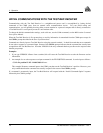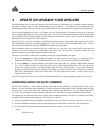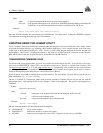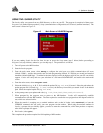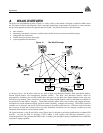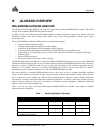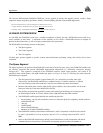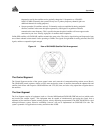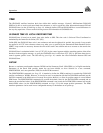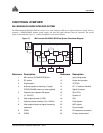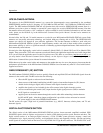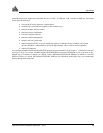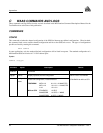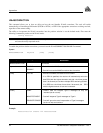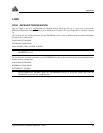
Appendices
26 Test Bed Receiver Subsystem Addendum – Rev 1
TIME
The GLONASS satellites broadcast their time within their satellite messages. NovAtel’s MiLLennium GLONASS
GPSCard is able to receive and record both time references as well as report the offset information between GPS and
GLONASS time (see the GCLA/B log on Page 41). Although similar, GPS and GLONASS have several differences in
the way they report time. Please see the following sections for information of GLONASS time.
GLONASS TIME VS. LOCAL RECEIVER TIME
GLONASS time is based on an atomic time scale similar to GPS. This time scale is Universal Time Coordinated as
maintained by the former Soviet Union (UTC (SU)).
Unlike GPS, the GLONASS time scale is not continuous and must be adjusted for periodic leap seconds. Leap seconds
are applied to all UTC time references about every other year as specified by the International Earth Rotation Service
(IERS). Leap seconds are necessary because the orbit of the earth is not uniform and not as accurate as the atomic time
references.
GLONASS time is maintained within 1 ms of UTC (SU) by the control segment with the remaining portion of the offset
broadcast in the navigation message. As well, the GLONASS time is offset from UTC (SU) by plus three hours due to
control segment specific issues. The GCLA/B log (see Page 41) contains the offset information between GPS and
GLONASS time.
DATUM
Because a consistent transformation between WGS84 and the Parametry Zemli 1990 (PZ90) or, in English translation,
Parameters of the Earth 1990 geodetic datum has not been defined, we have allowed for a new command,
PZ90TOWGS84, and a new parameter, PZ90, for the DATUM command.
The PZ90TOWGS84 command (see Page 35) is intended to define the PZ90 transform for transferring GLONASS
satellite coordinates to WGS84. However, it can also be used, in conjunction with the DATUM PZ90 command (see the
DATUM command in the MiLLennium Command Descriptions Manual), to allow for position output in a user-defined
PZ90 frame. The PZ90TOWGS84 command will override the default values for the DATUM PZ90 command and set
them to the user-defined values. If the PZ90TOWGS84 command is not issued, the DATUM PZ90 command will use the
default PZ90 values (see the PZ90TOWGS84 command on Page 35) for the output position parameters. The PZ90
transform parameters can be saved in user-configurable memory for immediate use on power up.



